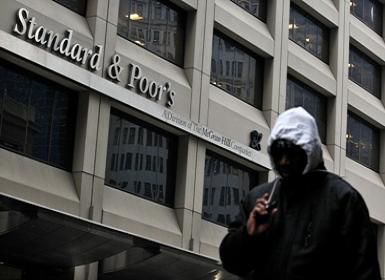Companies that relied on rosy metrics to help sell bonds to finance big mergers, acquisitions and leveraged buyouts in 2015 have typically fallen short of their targets, according to a study by ratings agency S&P.
“Aspirational” earnings and cost-saving “add-backs” have become a popular way for companies to show their businesses in the best possible light by boosting earnings estimates and artificially lowering leverage levels.
But S&P said some of those liberal add-backs have not played out as expected and that corporate debt levels have actually risen as earnings growth has fallen short.
“We found that both Ebitda growth and deleveraging efforts fell materially short of the issuers’ projections,” S&P said of deals it studied.
“Specifically, our findings showed that on average, actual reported net leverage was 2.9 turns higher than forecast for 2016, growing to 3.7 turns in 2017.”
S&P reviewed companies that were part of a leveraged buyout, merger or acquisition in 2015, and tracked their performance against management projections at the time they were trying to drum up investor demand for the debt financing.
Add-backs can range from technology savings to executive bonuses to job cuts that help management tell the best possible credit story to investors.
While not new, add-backs have become more aggressive of late, particularly as companies have revived massive buyouts not seen since the financial crisis.
Blackstone last week raised eyebrows with aggressive add-backs it included in its US$13.5bn financing package for a 55% stake in Thomson Reuters’ Financial & Risk business, which includes IFR and will be renamed Refinitiv next month.
The earnings adjustments on the Refinitiv bond factored in some US$650m of cost cuts the private equity firm plans to make in the first three years of the buyout.
The deal was still a hit with investors despite the risk those targets may not be reached, and could wave in more aggressive borrower terms on future debt-fueled buyouts and corporate tie-ups, analysts warn.
But even before the latest spate of issuer-friendly junk bond sales, S&P’s study suggests that investors cannot rely on issuers meeting ambitious targets.
“Virtually all issuers present a deleveraging story with surplus cash swept to reduce debt in management projections,” according to S&P.
Some 16% of the companies in its study had at least 25% more debt by the end of 2016 than projected by management. That increased to 31% for 2017.
That could call into question the legitimacy of some add-backs in the next downturn.
“When the credit cycle turns, it will be interesting to observe the default and recovery performance of entities with substantial Ebitda add-backs,” the ratings agency said.
